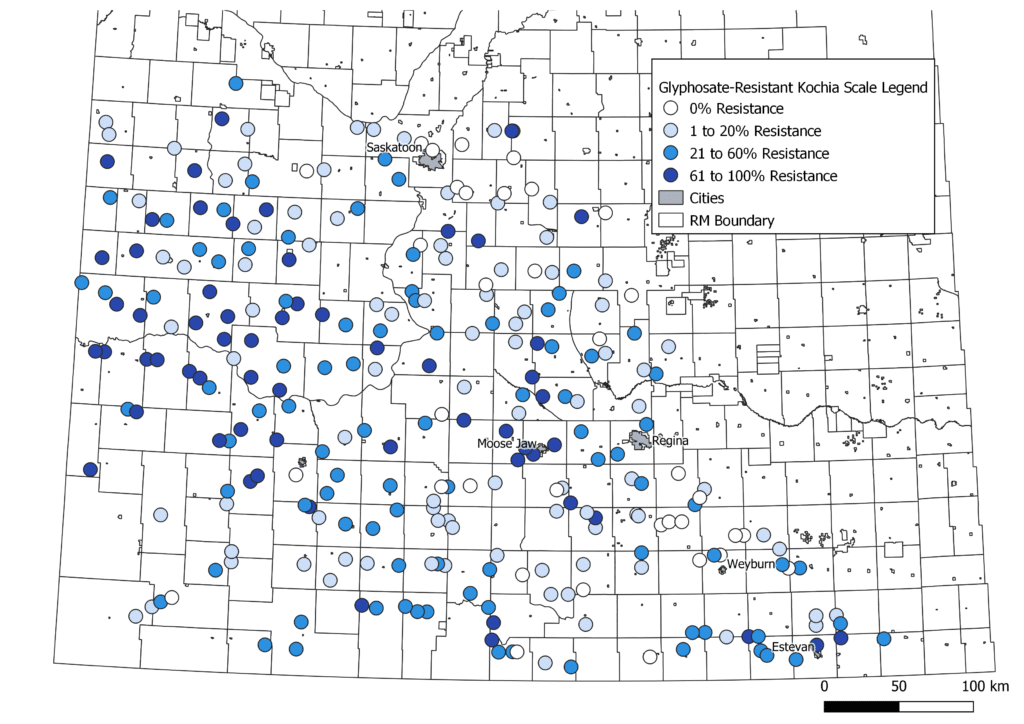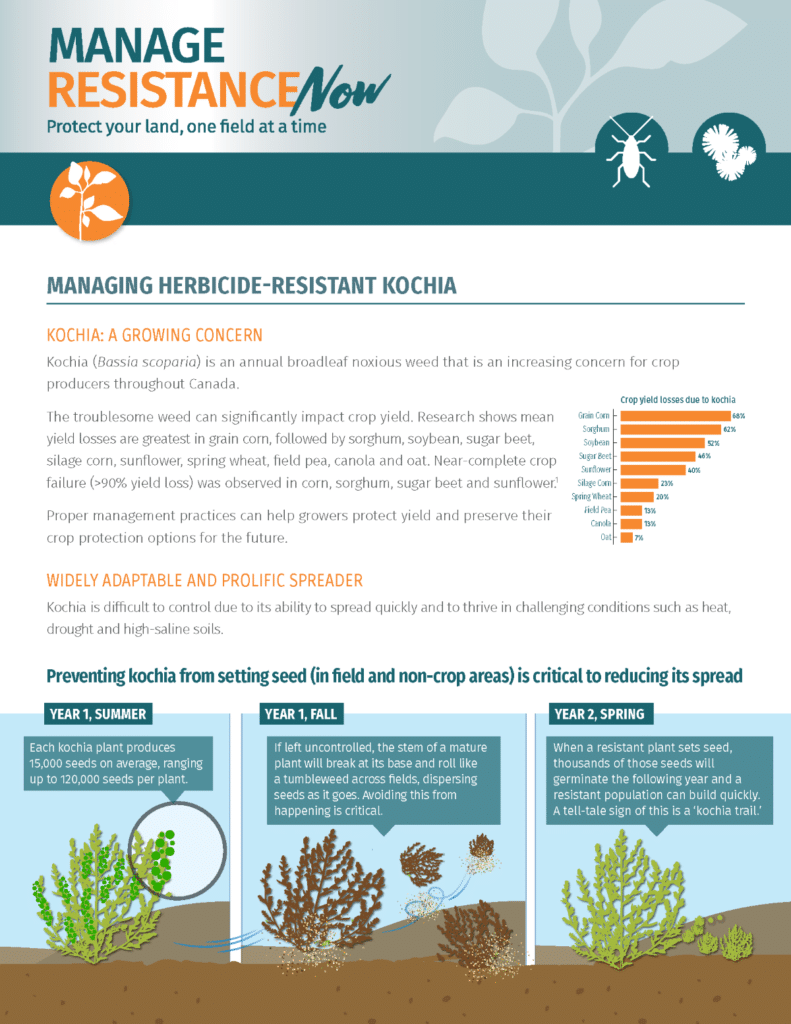Key Result
Farmers need an integrated approach to stop kochia. Take steps to deplete seedbanks, use cultural methods to rapidly achieve crop canopy closure, and apply a tank mix of pre-seed herbicides.
Project Summary
Overview
Kochia infests agricultural and disturbed areas on the Prairies, spreading thousands of seeds per mature plant as it tumbles across the landscape. The weed has become harder to kill with herbicides. Kochia has evolved resistance to several modes of action, including ALS-inhibiting herbicides (Group 2), glyphosate (Group 9), and synthetic auxins (Group 4).

Determining the rate and extent of evolution or spread of glyphosate-resistant (GR) or auxinic-resistant kochia since the initial baseline surveys, allows for better advice to producers of the risk, potential agronomic and economic impact, and best management practices to mitigate or manage these weed. Monitoring or surveillance enhances awareness and understanding of the current extent of the problem, which is required to facilitate adoption of mitigation or management measures for economically and agronomically sustainable annual crop production.
Researchers conducted randomized surveys post-harvest, starting in early October. They surveyed Manitoba in 2018, Saskatchewan in 2019 and Alberta in 2021. Researchers planted seeds from each sample and applied discriminating doses of glyphosate (900 grams of acid equivalent per hectare) or dicamba (280 grams of acid equivalent per hectare) to test for resistance.
Objective
To determine the distribution and abundance of GR or auxinic-resistant kochia and other targeted weeds (such as Russian thistle, waterhemp, and ragweed species) in Manitoba in 2018, Saskatchewan in 2019, and Alberta in 2021 through a survey of 300 sites in each province.
Results
The incidence of glyphosate-resistant kochia increased substantially from previous surveys. Researchers found glyphosate resistance in 58 per cent of Manitoba samples, 87 per cent of Saskatchewan samples and 78 per cent of Alberta samples. They found dicamba resistance in on per cent of Manitoba sites, 45 per cent of Saskatchewan sites and 28 per cent of Alberta sites. This documents the first instance of dicamba-resistant kochia in Manitoba.
Assuming all kochia is resistant to ALS-inhibitors, triple-resistant kochia was present in 40 per cent of Saskatchewan samples (n=255), less than one per cent of Manitoba samples (n=300), and 10 per cent (n=314) of Alberta samples. Additional screening showed 44 per cent of Alberta samples were fluroxypyr-resistant and 25 per cent were triple-resistant.
Herbicide-resistant kochia has become more prevalent on the Prairies. Seedbanks should be depleted to reduce selection pressure on herbicides. Cultural methods to rapidly achieve canopy closure should be integrated with pre-emergence herbicides to prevent escapes after herbicide efficacy wanes. Kochia is present in many environments outside of cropped land so mitigation procedures for tumbleweeds are advised.
Best practices to control weeds
The control best management practices include:
- use a diversified approach including cultural, chemical, and mechanical management strategies
- use full labeled herbicide doses to the proper stage
- rotate herbicide modes of action
- use cultural practices to achieve canopy closure rapidly
- use mechanical control strategies when possible
Learn the explanations behind these recommendations in the final report.
The space-time best management practices include:
- managing weeds prior to seeding
- managing weed at or after harvest
- preventing within and between field movement of kochia seed and tumbleweeds
- managing field borders
Learn the explanations behind these recommendations in the final report.
Manage herbicide-resistant weeds
For practical tips to reduce the seedbank, read the Canola Watch fundamentals article Integrated weed management: Best practices.
Additional resources are provide below.








